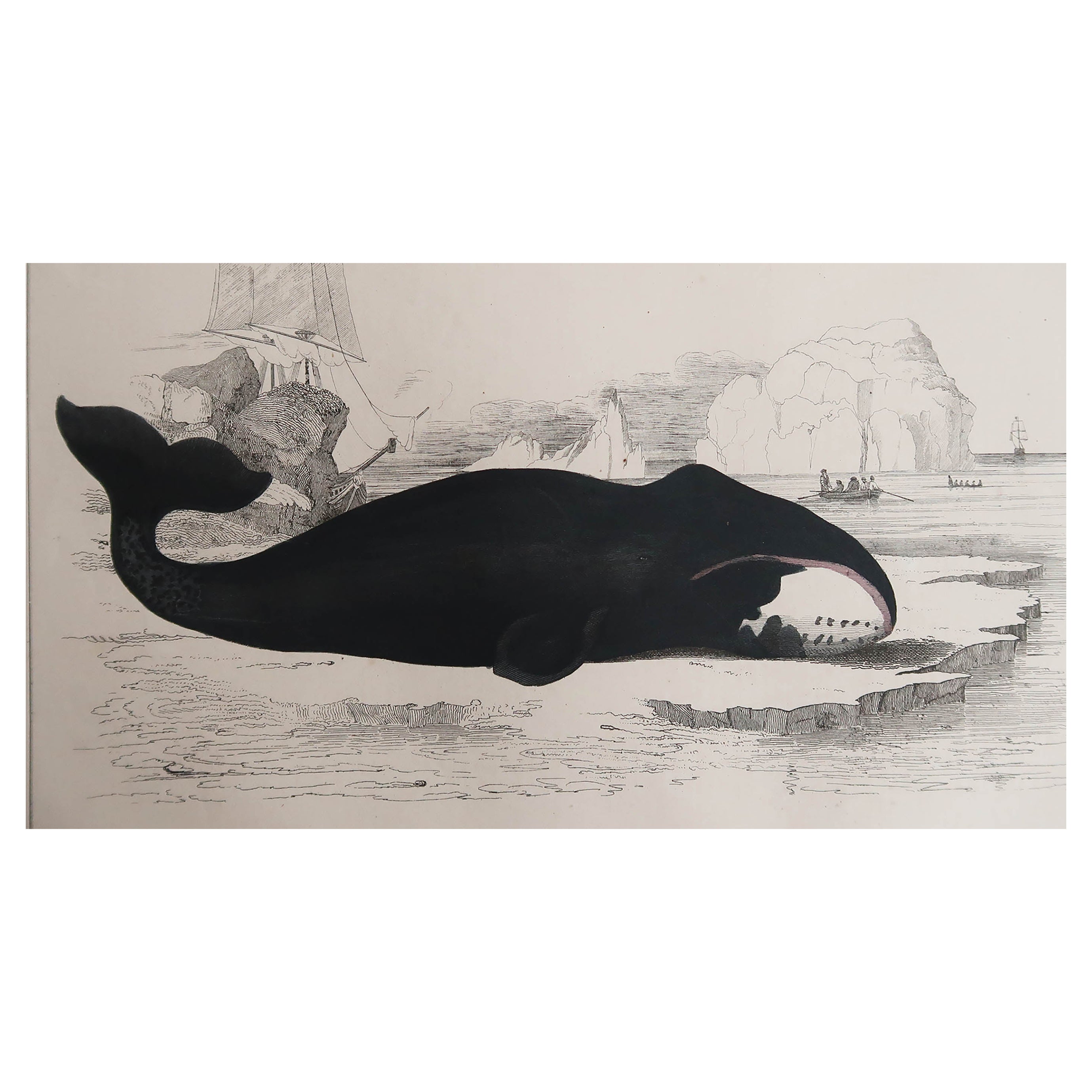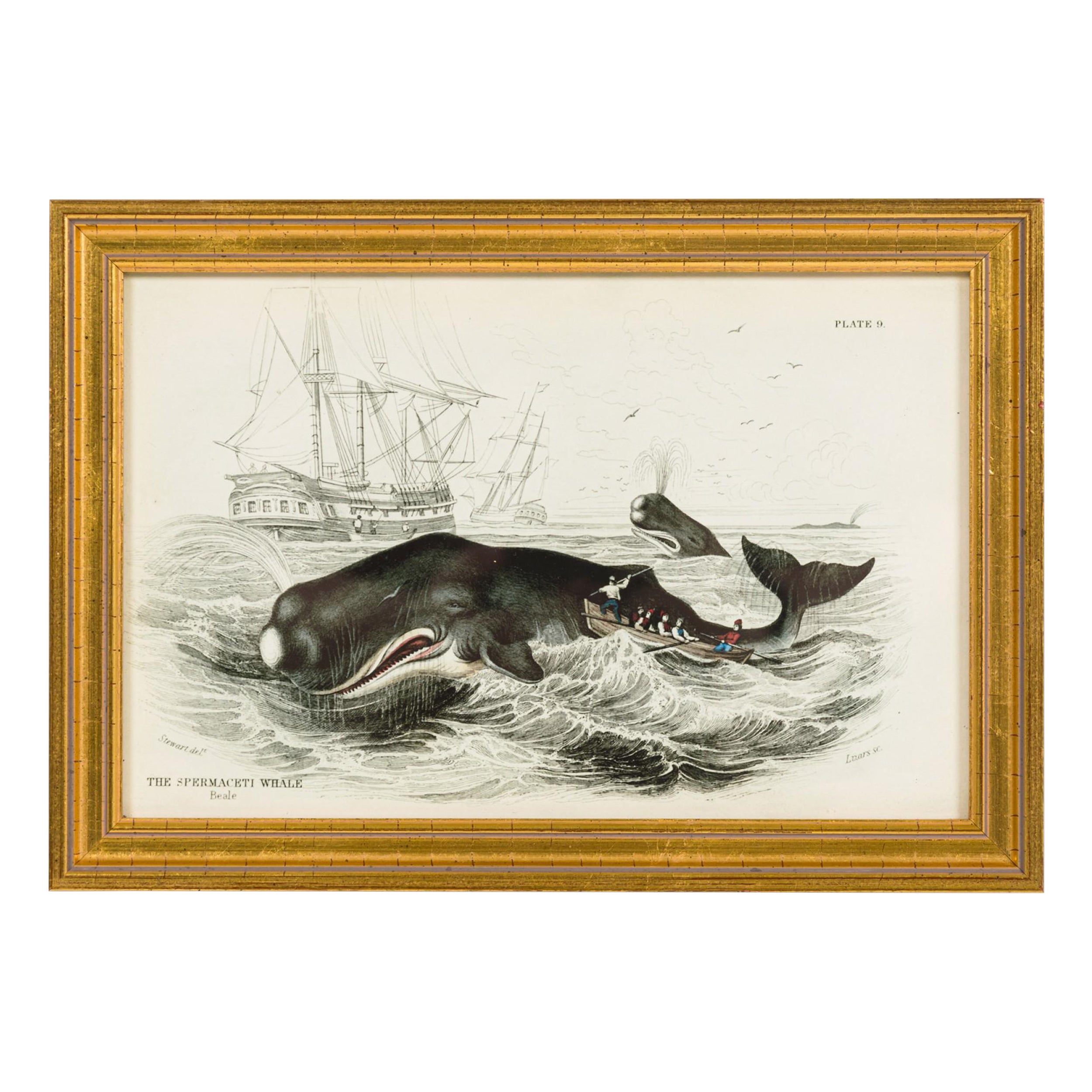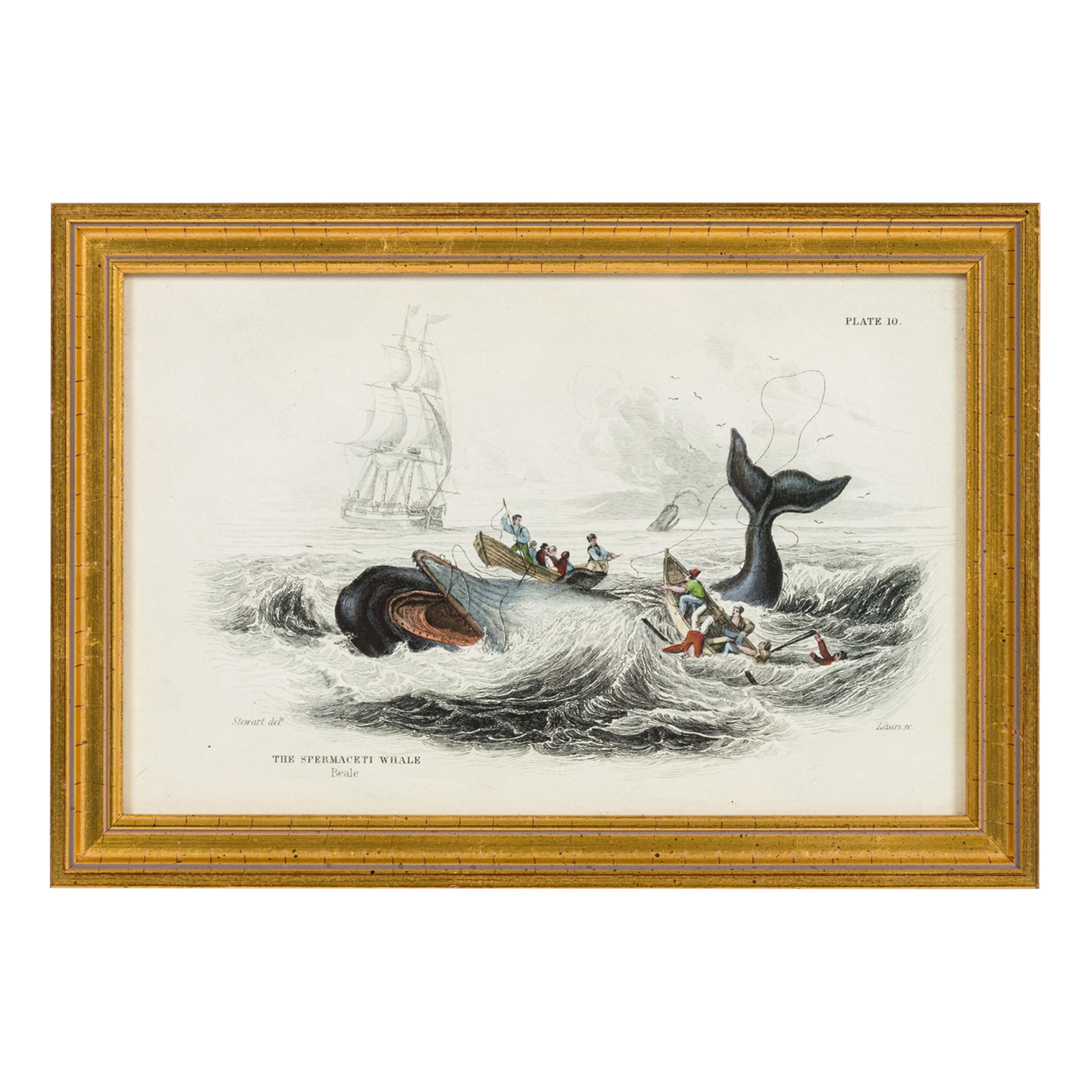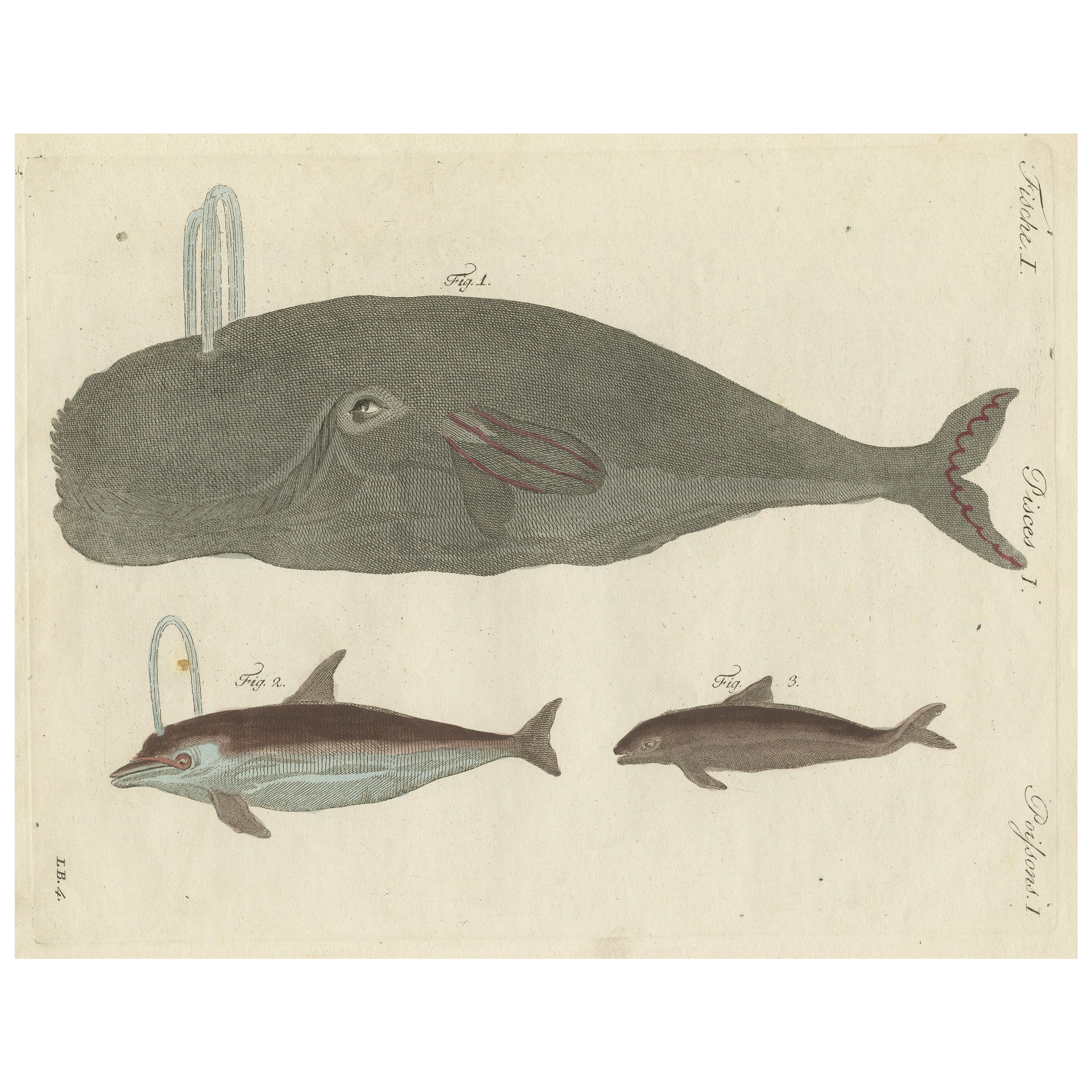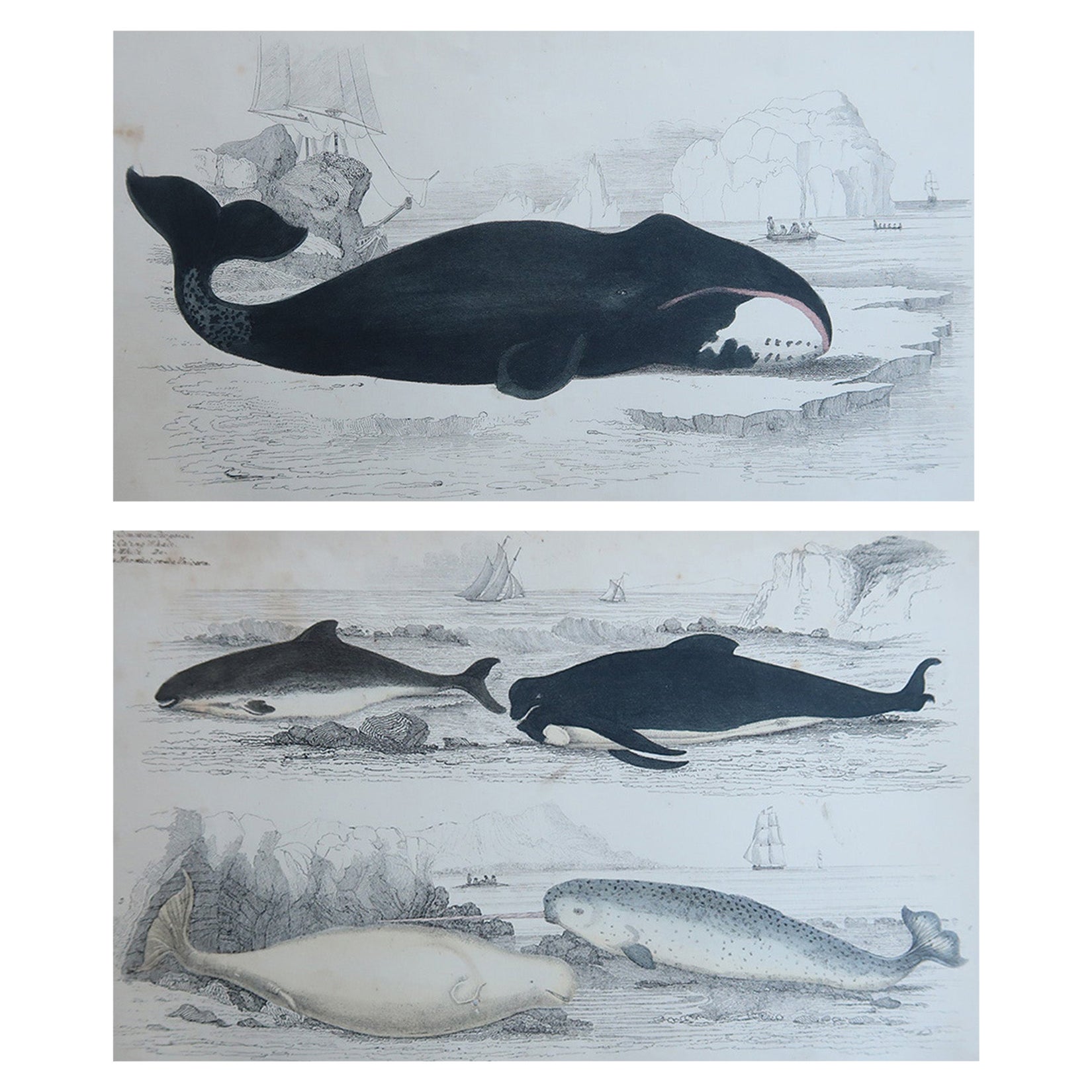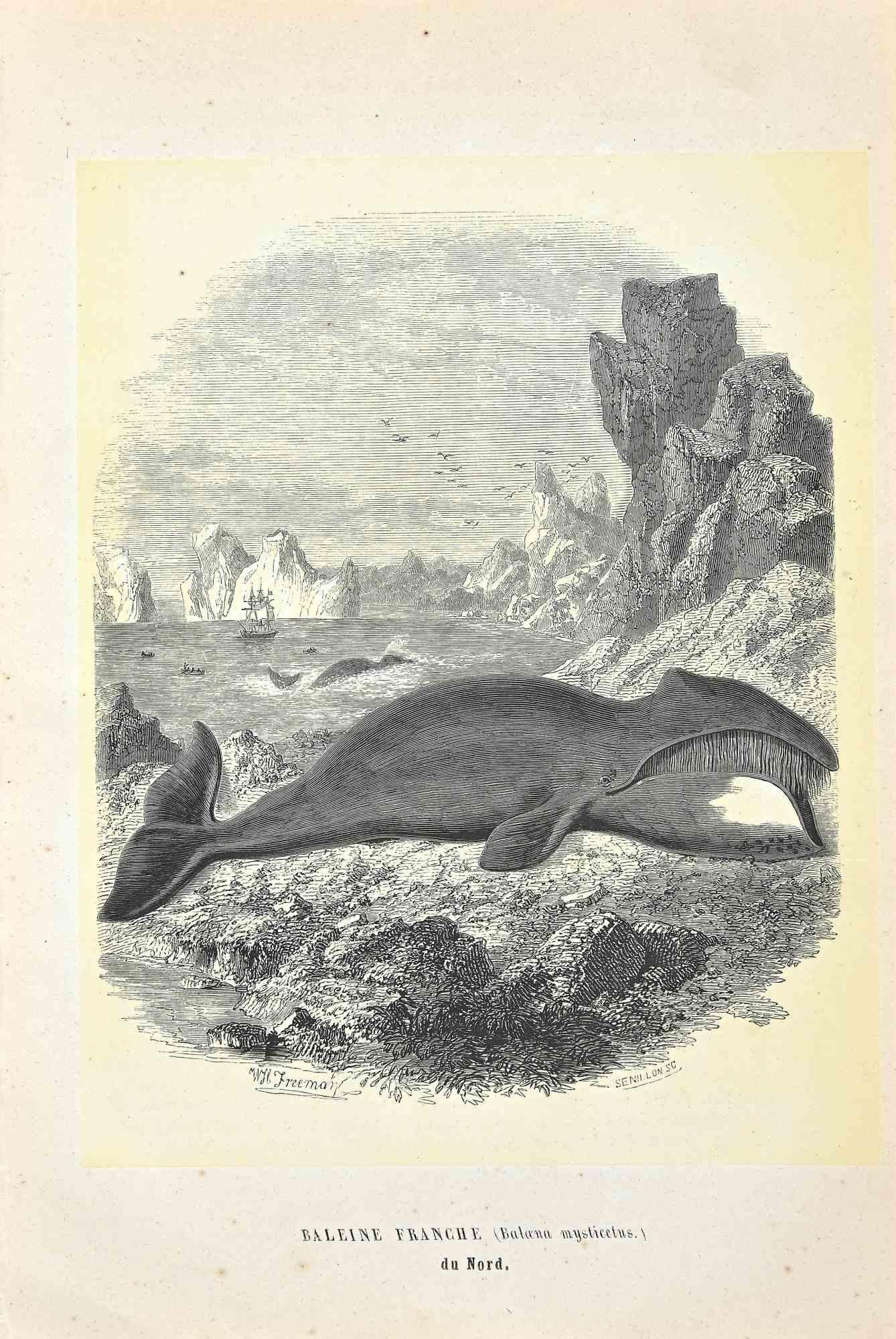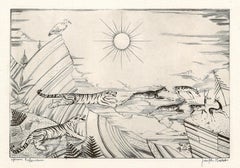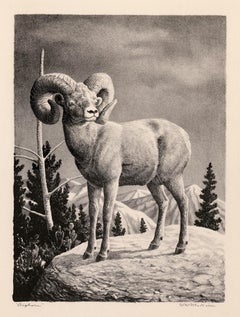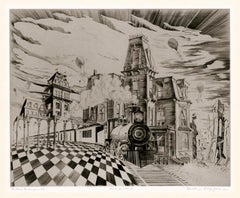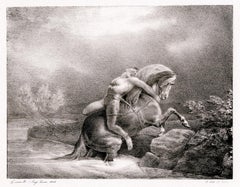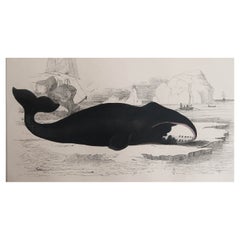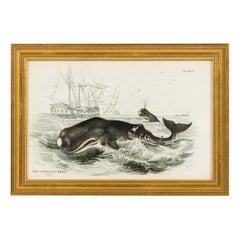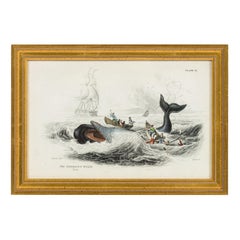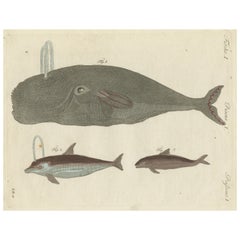Items Similar to Whaling – Vintage Monumental Zoology Lithograph
Want more images or videos?
Request additional images or videos from the seller
1 of 6
Joseph FleischmannWhaling – Vintage Monumental Zoology Lithograph1900
1900
$1,125
$1,50025% Off
£860.83
£1,147.7825% Off
€985.23
€1,313.6525% Off
CA$1,588.80
CA$2,118.4025% Off
A$1,726.75
A$2,302.3325% Off
CHF 925.38
CHF 1,233.8425% Off
MX$20,965.80
MX$27,954.4025% Off
NOK 11,617.58
NOK 15,490.1125% Off
SEK 10,773.54
SEK 14,364.7225% Off
DKK 7,358.49
DKK 9,811.3225% Off
About the Item
Joseph Fleischmann, 'Whaling' (Hartingers Wandtafeln: Zoologie T. XXXII), monumental vintage color lithograph, 1900. Signed in the matrix, lower right. A superb, beautifully nuanced impression, on cream wove paper, the full sheet with margins (1 1/2 to 2 3/16 inches), in very good condition. Sheet size 28 x 38 1/2 inches (711 x 978 mm). The full sheet, unmounted and unmatted—shipped carefully rolled and protected.
Rendering by A. Berger after Joseph Fleischmann. Published by Carl Gerold’s Son, Vienna, 1900.
This Artic whaling scene depicts a Greenland whale in the foreground pursued by whalers. A whaling ship is seen in the background and at right, another whale among icebergs with seagulls overhead. The print by Albert Berger was included in the suite of Zoology plates.
- Creator:Joseph Fleischmann (German)
- Creation Year:1900
- Dimensions:Height: 28 in (71.12 cm)Width: 38.5 in (97.79 cm)
- Medium:
- Movement & Style:
- Period:
- Condition:
- Gallery Location:Myrtle Beach, SC
- Reference Number:Seller: 1040801stDibs: LU532310828502
About the Seller
5.0
Recognized Seller
These prestigious sellers are industry leaders and represent the highest echelon for item quality and design.
Platinum Seller
Premium sellers with a 4.7+ rating and 24-hour response times
Established in 1995
1stDibs seller since 2016
334 sales on 1stDibs
Typical response time: 1 hour
Associations
International Fine Print Dealers Association
- ShippingRetrieving quote...Shipping from: Myrtle Beach, SC
- Return Policy
More From This Seller
View AllAsie (Asia) from the series Atlas — Atelier 17
By Joseph Hecht
Located in Myrtle Beach, SC
Joseph Hecht, 'Asie (Asia) from the series Atlas', engraving, 1928, edition c. 50, Tonneau-Ryckelynck & Plumart 162. Signed and annotated 'epreuve definitive' (final proof) in pencil...
Category
1930s Modern Animal Prints
Materials
Engraving
'Bighorn' — Mid-Century American Regionalism
Located in Myrtle Beach, SC
William Wind McKim, 'Bighorn', lithograph, 1940, edition c. 25. Signed and titled in pencil. A fine, richly-inked impression, on cream wove paper, the full sheet with margins (2 to 4...
Category
1940s American Realist Animal Prints
Materials
Lithograph
$600 Sale Price
20% Off
'Fantasia Americana, 1880' — Mid-Century American Surrealism
By Lawrence Kupferman
Located in Myrtle Beach, SC
Lawrence Kupferman, 'Fantasia Americana – 1880', drypoint etching with sandground, 1943. Signed, titled, and annotated 'Series A, 1971 2/6' in pencil. A superb, richly-inked impression, on heavy, cream wove paper, with full margins (2 1/2 to 3 1/2 inches); the paper slightly lightened within the original mat opening, otherwise in excellent condition. One of only 6 impressions printed in 1971, with the added sandground grey background tint. Archivally matted to museum standards, unframed.
Image size 11 13/16 x 14 3/4 inches; sheet size 18 x 20 1/4 inches.
Collections: National Gallery of Art, Zimmerli Art Museum (Rutgers University).
ABOUT THE ARTIST
Lawrence Kupferman (1909 - 1982) was born in the Dorchester neighborhood of Boston and grew up in a working-class family. He attended the Boston Latin School and participated in the high school art program at the Museum of Fine Arts, Boston. In the late 1920s, he studied drawing under Philip Leslie Hale at the Museum School—an experience he called 'stultifying and repressive'. In 1932 he transferred to the Massachusetts College of Art, where he first met his wife, the artist Ruth Cobb. He returned briefly to the Museum School in 1946 to study with the influential expressionist German-American painter Karl Zerbe.
Kupferman held various jobs while pursuing his artistic career, including two years as a security guard at the Museum of Fine Arts, Boston. During the 1930s he worked as a drypoint etcher for the Federal Art Project, creating architectural drawings in a formally realistic style—these works are held in the collections of the Fogg Museum and the Smithsonian American Art Museum. In the 1940s he began incorporating more expressionistic forms into his paintings as he became progressively more concerned with abstraction. In 1946 he began spending summers in Provincetown, Massachusetts, where he met and was influenced by Mark Rothko, Hans Hofmann, Jackson Pollock, and other abstract painters. At about the same time he began exhibiting his work at the Boris Mirski Gallery in Boston.
In 1948, Kupferman was at the center of a controversy involving hundreds of Boston-area artists. In February of that year, the Boston Institute of Modern Art issued a manifesto titled 'Modern Art and the American Public' decrying 'the excesses of modern art,' and announced that it was changing its name to the Institute of Contemporary Art (ICA). The poorly conceived statement, intended to distinguish Boston's art scene from that of New York, was widely perceived as an attack on modernism. In protest, Boston artists such as Karl Zerbe, Jack Levine, and David Aronson formed the 'Modern Artists Group' and organized a mass meeting. On March 21, 300 artists, students, and other supporters met at the Old South Meeting House and demanded that the ICA retract its statement. Kupferman chaired the meeting and read this statement to the press:
“The recent manifesto of the Institute is a fatuous declaration which misinforms and misleads the public concerning the integrity and intention of the modern artist. By arrogating to itself the privilege of telling the artists what art should be, the Institute runs counter to the original purposes of this organization whose function was to encourage and to assimilate contemporary innovation.”
The other speakers were Karl Knaths...
Category
1940s Surrealist Figurative Prints
Materials
Drypoint, Etching
'Mazeppa' — 19th-Century French Romanticism
By Jean Louis Andre Theodore Gericault
Located in Myrtle Beach, SC
Théodore Géricault and Eugène Lami, 'Mazeppa' from the series 'Oeuvres de Lord Byron', lithograph, 1823, 2nd state of 3, Delteil 94. Rendered by Thé...
Category
1820s Romantic Animal Prints
Materials
Lithograph
'Bird Dog' — Mid-century American Surrealism
By Robert Vale Faro
Located in Myrtle Beach, SC
Robert Vale Faro, 'Bird Dog', color lithograph with relief collagraph, 1946, edition 14. Signed, dated, titled, and numbered '123' (the artist's inventory number) and '12/14' in pen. A fine impression, with fresh colors, on heavy, cream, wove paper; the full sheet with margins(1 3/4 to 3 1/2 inches), in excellent condition. Scarce. Matted to museum standards, unframed.
Image size 10 1/8 x 6 7/8 inches (257 x 174 mm); sheet size 17 x 11 7/16 inches (432 x 291 mm).
A collagraph is a relief print made from a collage of various materials adhered to a metal, plastic, hardboard, or other type of ground plate. In this work, the artist appears to have combined a lithograph with a collagraph to achieve the intricately textured image.
ABOUT THE ARTIST
Robert Vale Faro (1902-1988) was a well-known modernist architect and artist associated with the Chicago Bauhaus. He received his degree in architecture and design from the Armour Institute in Chicago and worked at L'Ecole des Beaux-Arts, Paris, from 1924-27, where he was influenced by Harry Kurt Bieg and Le Corbusier. Upon his return to Chicago, Faro worked with the important modernist Chicago architects George and William Keck under Louis Sullivan.
Faro founded the avant-garde printmaking group Vanguard in 1945. The group counted Atelier 17 artists Stanley William Hayter, Sue Fuller, and Anne Ryan as New York members and Francine Felsenthal of Chicago. The Brooklyn Museum mounted a show of Vanguard artists' work in 1946, which subsequently toured several other institutions in the United States.
Faro's visionary graphics from the 1940s are a sophisticated blend of Abstract Expressionism, Surrealism, and Indian Space...
Category
1940s Surrealist Abstract Prints
Materials
Lithograph
$600 Sale Price
20% Off
'Taos - Relic of the Insurrection of 1845' — Southwest Regionalism
By Ira Moskowitz
Located in Myrtle Beach, SC
Ira Moskowitz, 'Relic of the Insurrection of 1845' also 'Taos Pueblo with Ruin)', lithograph, 1944, edition 30, Czestochowski 121. Signed and titled in pencil. Signed and dated in the stone, lower right. A fine, richly-inked impression, on cream wove paper, with full margins (1 3/8 to 1 15/16 inches). Very pale light toning within a previous mat opening, otherwise in excellent condition. Matted to museum standards, unframed.
Image size 11 5/8 x 15 1/2 inches (296 x 394 mm); sheet size 15 1/8 x 19 inches (384 x 483 mm).
ABOUT THE IMAGE
The Taos Revolt was a populist insurrection in January 1847 by Hispano and Pueblo allies against the United States occupation of present-day northern New Mexico during the Mexican–American War. The rebels killed provisional governor Charles Bent and several other Americans. In two short campaigns, United States troops and militia crushed the rebellion of the Hispano and Pueblo people. The New Mexicans, seeking better representation, regrouped and fought three more engagements, but after being defeated, they abandoned open warfare. The hatred of New Mexicans for the occupying American army, combined with the rebelliousness of Taos residents against imposed outside authority, were causes of the revolt. In the uprising's aftermath, the Americans executed at least 28 rebels. The Treaty of Guadalupe Hidalgo in 1850 guaranteed the property rights of New Mexico's Hispanic and American Indian residents.
ABOUT THE ARTIST
Ira Moskowitz was born in Galicia, Poland, in 1912, emigrating with his family to New York in 1927. He enrolled at the Art Student's League and studied there from 1928-31. In 1935, Moskowitz traveled to Paris and then lived until 1937 in what is now Israel. He returned to the United States in 1938 to marry artist Anna Barry in New York. The couple soon visited Taos and Santa Fe in New Mexico, returning for extended periods until 1944, when they moved there permanently, staying until 1949. During this especially productive New Mexico period, Moskowitz received a Guggenheim fellowship. His work was inspired by the New Mexico landscape and the state’s three cultures (American Southwest, Native American, and Mexican). He focused on Pueblo and Navajo life, producing an extensive oeuvre of authentic American Indian imagery. He and Anna also visited and sketched across the border in Old Mexico. While in the Southwest, Moskowitz flourished as a printmaker while continuing to produce oils and watercolors. Over 100 of Moskowitz’s works depicting Native American ceremonies were used to illustrate the book American Indian Ceremonial Dances by John Collier, Crown Publishers, New York, 1972.
After leaving the Southwest, printmaking remained an essential medium for the artist while his focus changed to subject matter celebrating Judaic religious life and customs. These works were well received early on, and Moskowitz was content to stay with them the rest of his life. From 1963 until 1966, Moskowitz lived in Paris, returning to New York City in 1967, where he made his permanent home until he died in 2001.
Shortly before his death, Zaplin-Lampert Gallery of Santa Fe staged an exhibition of the artist's works, December 2000 - January 2001. Other one-person shows included the 8th Street Playhouse, New York, 1934; Houston Museum, 1941; and the San Antonio Museum, 1941. The artist’s work was included in exhibitions at the Art Students League, Art Institute of Chicago, Philadelphia Print Club, College Art Association (promotes excellence in scholarship and teaching), and the International Exhibition of Graphic Arts (shown at MOMA, 1955).
Moskowitz’s lithographs of American Indian...
Category
1940s American Modern Landscape Prints
Materials
Lithograph
You May Also Like
Original Antique Print of a Whale, 1847 'Unframed'
Located in St Annes, Lancashire
Great image of a whale.
Unframed. It gives you the option of perhaps making a set up using your own choice of frames.
Lithograph after Cpt. Brown with original hand color.
Publish...
Category
Antique 1840s English Folk Art Prints
Materials
Paper
English Lithograph Print of Spermaceti Whale Hunting
Located in Queens, NY
English (19th Century) gold framed lithograph being attacked by hunters (titled \"The Spermaceti Whale\" Beale, plate 9) (Simiar to: NWL7290B)
Category
Antique 19th Century British Victorian Paintings
Materials
Gold
English Lithograph Print of Hunters Attacking a Whale
Located in Queens, NY
English (19th Century) gold framed lithograph titled \"The Spermaceti Whale\" being attacked by hunters in 2 row boats (titled \"The Spermaceti Whale\" Beale-plate 10) (Simiar to: NW...
Category
Antique 19th Century British Victorian Paintings
Materials
Gold
Hand colored Engraving of a Bowhead Whale and other Marine Life
Located in Langweer, NL
Bowhead whale, Balaena mysticetus 1, short-beaked common dolphin, Delphinus delphis 2 and porpoise, Phocoena phocoena 3. Source unknown, to be deter...
Category
Antique Late 18th Century Prints
Materials
Paper
$323 Sale Price
20% Off
Original Antique Prints of Whales and Dolphins, 1847
Located in St Annes, Lancashire
Great images of Whales and dolphins
Unframed.
Lithographs after Cpt. Brown with original hand color.
Published, 1847.
The measurement is for 1 print
Free shipping
Category
Antique 1840s English Folk Art Prints
Materials
Paper
North Atlantic Right Whale - Original Lithograph by Paul Gervais - 1854
By Paul Gervais
Located in Roma, IT
North Atlantic Right Whale is an original lithograph on ivory-colored paper, realized by Paul Gervais (1816-1879). The artwork is from The Series of "Les T...
Category
1850s Modern Figurative Prints
Materials
Lithograph
